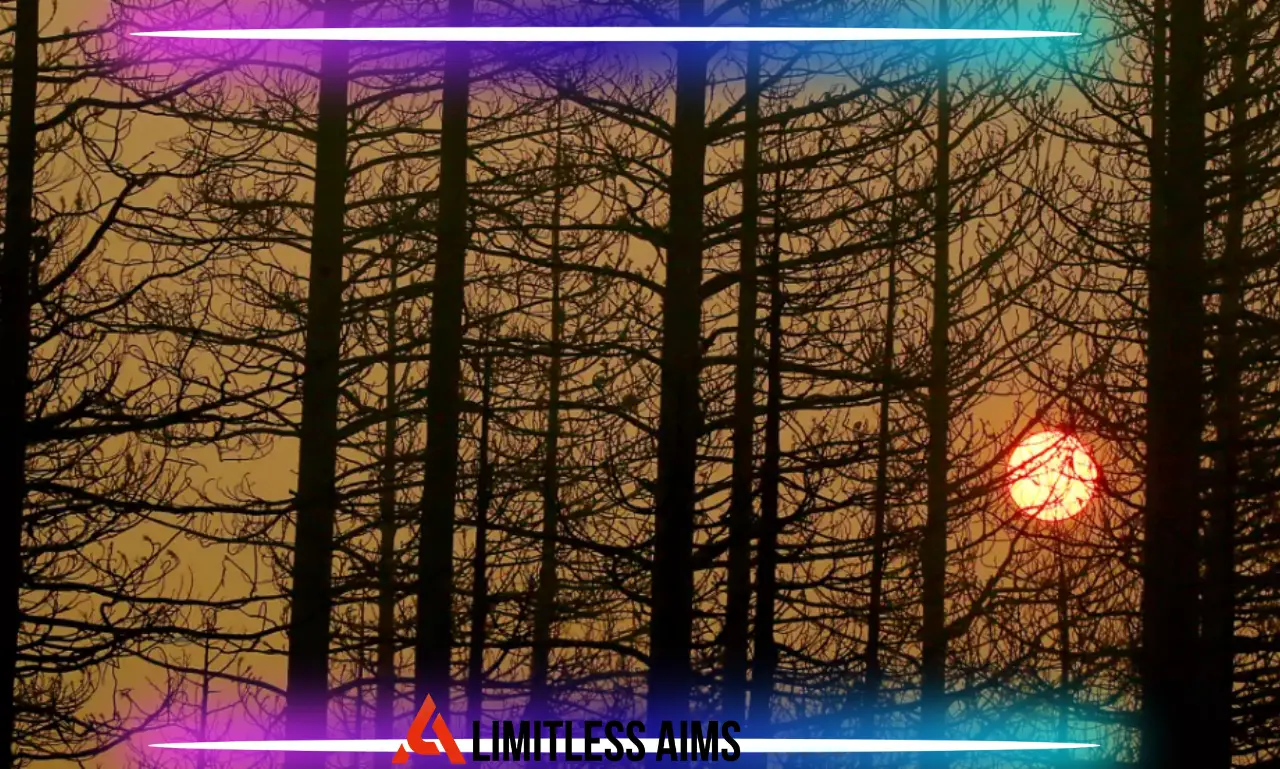Large portions of North America boiled and eventually burnt three years ago as a giant heat dome hovered over the Pacific Northwest. Over 18.5 million acres were destroyed by wildfires throughout the continent, with Canada and California suffering the most damage.
Researchers theorize that the heat dome was 34% larger and lasted nearly 60% longer than it would have in the absence of global warming, which demonstrates the extent to which human-caused climate change enhanced the unusual occurrence. This is revealed in a recent study. The study, which was published in Communications Earth & Environment, linked the heat dome to as much as one-third of the land that burnt in North America that year.
“A stagnant weather pattern results in extremely hot and dry weather,” explained Piyush Jain, a research scientist with Natural Resources Canada and the study’s author. Additionally, it dries up all the flora and intensifies the flammability of whatever that is on the ground.
Heat Dome
When the temperature in Edmonton, the metropolis with a million people in the north of North America, reached above 100 degrees in late June 2021, Jain was a resident there. “I was astounded,” he exclaimed. “I had never lived in a place with temperatures like that.”
Further south, on June 29, the town of Lytton, British Columbia, achieved the highest temperature in Canada history—119 degrees—and the next day, a wildfire partially devastated the town.
For an incredible 27 days, from June 18 to July 14, the heat dome persisted, causing hundreds of people to die, massive die-offs of marine life, catastrophic crop and timber yields, and damage to infrastructure, including buckling highways in Washington and melting train power lines in Portland. The National Oceanic and Atmospheric Administration claims that during a five-day span in June, temperatures in seven U.S. states—including California—surpassed all-time maximum records.
In addition to raising the risk of fire, the heat wave broke numerous records for fire weather throughout a large region and contributed to the spread of fires in British Columbia, California, Arizona, Colorado, Utah, and Montana. According to the report, almost 7.9 million acres burnt in North America in July alone, making it the largest area to burn in a single month since record-keeping began. As smoke spread around the continent, air quality warnings were issued for a large portion of the East Coast.
Climate and surroundings
It’s true that beavers can put out flames. And more Californian communities are welcoming them.
In the past, Jain collaborated with other scientists to create a technique for assessing these extreme weather occurrences by examining variations in geopotential heights, which show the presence of high- or low-pressure systems in the upper atmosphere. According to him, extended periods of high pressure are typically associated with heat waves and a higher danger of fire. Furthermore, a trend of increasing heights has been facilitated by climate change, which may amplify these occurrences.
Jain and his associates examined in this study what the heat dome might have looked like in the absence of this tendency. According to their estimates, it would have been 6% lower in magnitude, 34% smaller, and 59% shorter.
Strong correlations between the intense heat and wildfire activity in 2021 were also discovered by the researchers. Researchers determined that 21% of the area burned in North America that year was burned by fires that began during and within the heat dome; that percentage increased to 34% when fires that started within 10 days were included.
The study authors described the resulting extensive synchronous burning—many different regions blazing at the same time—as particularly concerning due to the heat dome’s size. This presented a problem for fire departments since, in situations where they lack resources locally, they frequently turn to outside sources for assistance.
“You can eventually reach a bottleneck if other areas are also facing the same resource strain,” Jain stated.
According to John Abatzoglou, a UC Merced professor of climatology who worked on the study, when there aren’t enough resources to fight fires when they first start, flames that might have been put out when they were small grow large and difficult to contain, necessitating the need for even more resources. According to him, if this kind of synchronous activity continues in the next few years, fire management might be forced to reconsider how reliable resource-sharing agreements are.
The impact of the heat dome, which reached Northern California, on the state’s fire season was not particularly examined in the study. That summer, the 221,000-acre Caldor fire quickly followed the 963,000-acre Dixie fire, which broke out on July 13 and was the first to spread from one side of the Sierra Nevada to the other.
Since flames are frequently caused by a complex interplay of circumstances, such as wind or overcrowded forests, it is generally challenging to fully trace a fire to a single source, according to Abatzoglou. Nevertheless, he said that 2021 saw California’s warmest June to July of the observational era and that scientists have shown a substantial correlation between warm, dry summers and the amount of land burned in the state’s woods.
According to Abatzoglou, “it’s obviously difficult to say how much the heat dome itself was responsible for those fires.” “However, given the abnormally high temperatures and notable heat wave events that occurred during that month, we can conclude that those circumstances undoubtedly contributed to the extreme availability of fuels and reduced fire resistance once a fire broke out.”





